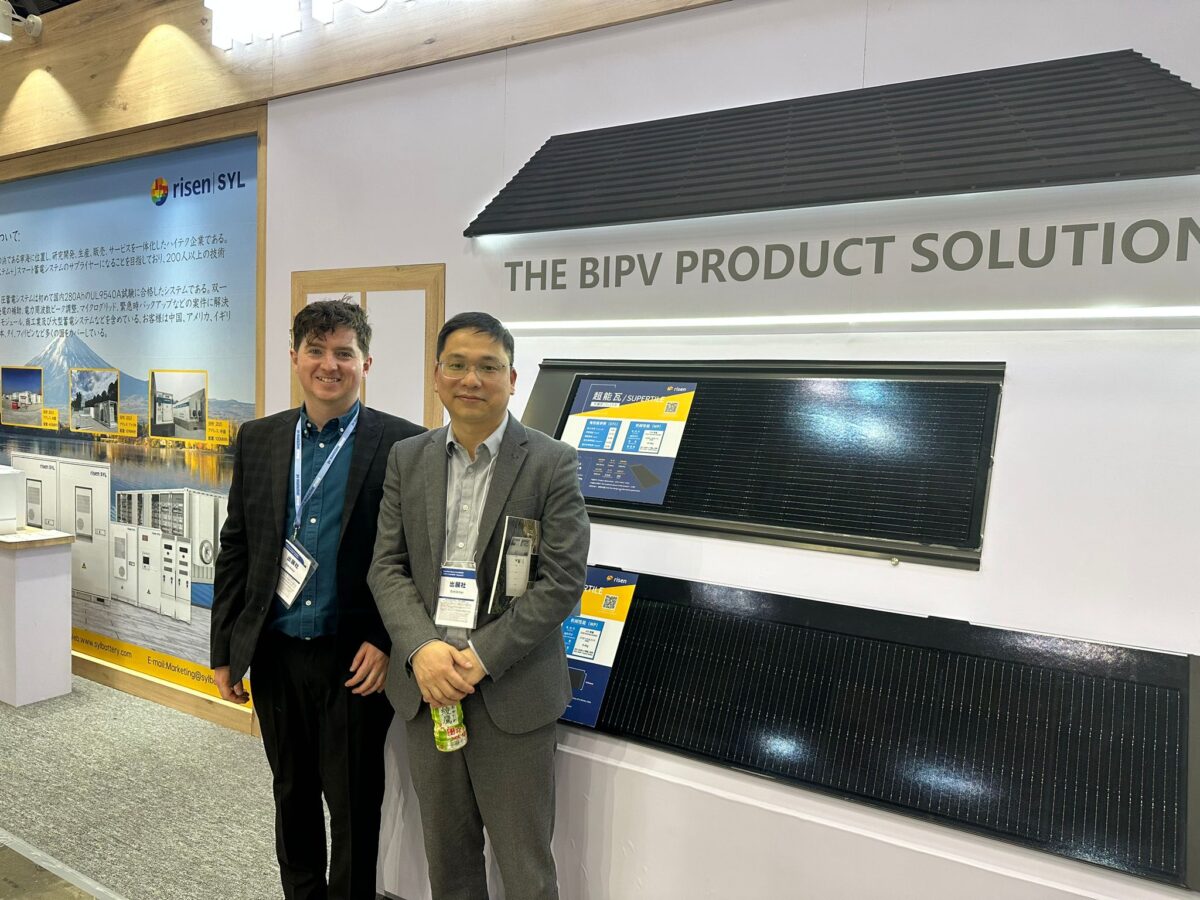Risen Energy has achieved some very impressive efficiency results with the Hyper-ion series – when will we see these modules on the market?
Right now we are in the pilot phase of production, with a test line up and running. And we expect to begin full-scale commercial production at our base in Jiangsu province in the first half of the year. By the end of the year, we will be producing heterojunction modules at a similar cost to PERC and TOPCon. In production, the highest cell efficiency is above 25.6% and average efficiency is 22.5% for modules.
The first lines in operation will be 5 GW for cells and 10 GW for modules. The second phase will add another 4 GW of cell production and 6 GW for modules, so in total our current plans for heterojunction technology are for 9 GW of cell capacity and 16 GW of module.
Are you committed fully to heterojunction for the future, is Risen evaluating any other cell technologies?
For cell technology, our policy is heterojunction first. This is our first choice and our main focus. However, we will also work with TOPCon.
We see TOPCon as more of a “PERC plus” technology. If you have PERC capacity, you need to upgrade it to TOPCon, otherwise your production lines will soon be useless. We will follow up on TOPCon technology and look to upgrade our PERC lines and keep them operational for a while longer.
Last year we announced an investment in 10 GW of new capacity that will also be TOPCon, and this is more about bringing our capacity for cell production closer to what we have for modules.
As you get to these big production numbers for HJT, the silver content becomes a bit of a problem. Is that something that's on your roadmap to address?
Silver-coated copper is the technology we are working on right now, and we think that will soon become an industry standard used by most companies producing heterojunction cells.
At Risen Energy, we have reduced silver consumption to 9-10 milligrams per watt, when a few of our competitors are still at around 12, and the industry average is 14. So we are already leading in this area, and once we start working with copper-coated silver, we can reduce this again by around 50%.
Heterojunction is also known as one of the simplest technologies to integrate with perovskite and form a tandem cell – is Risen also working on this?
We have established a research and development team focused on this, which is focused on building more knowledge and ability at both the cell and module level for tandem technology. This is still in the research phase, and we are hoping to have some achievements to announce later this year.
But for our R&D team overall, the priority is to reduce the cost of heterojunction production. That will really be our focus for the rest of this year and next. After this, we can look at adding more technology and capabilities, but for now there is still work to do on HJT.
Risen is also active in the energy storage business, how is this developing?
That’s right, we are mostly doing engineering, procurement and construction work for large, utility-scale battery projects. In the United States, I think we are already among the top three suppliers in large-scale energy storage. We are also active in Europe, and starting out in Australia as well. Worldwide, we are around the ninth or tenth largest player in large-scale energy storage projects.
A lot of these are batteries co-located with solar, we try to provide a one-stop shop for developers – PV and storage.
And have you also looked at the manufacturing side of energy storage?
Yes, and we do have a 300 MWh battery factory, this is producing a different technology though, which we usually only sell in Japan.
For us it is more the business of combining battery cells together, and shipping them, to the US for example. Similar to the PV module business.
This content is protected by copyright and may not be reused. If you want to cooperate with us and would like to reuse some of our content, please contact: editors@pv-magazine.com.




By submitting this form you agree to pv magazine using your data for the purposes of publishing your comment.
Your personal data will only be disclosed or otherwise transmitted to third parties for the purposes of spam filtering or if this is necessary for technical maintenance of the website. Any other transfer to third parties will not take place unless this is justified on the basis of applicable data protection regulations or if pv magazine is legally obliged to do so.
You may revoke this consent at any time with effect for the future, in which case your personal data will be deleted immediately. Otherwise, your data will be deleted if pv magazine has processed your request or the purpose of data storage is fulfilled.
Further information on data privacy can be found in our Data Protection Policy.